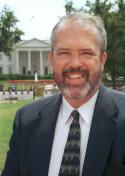The Independent Newsweekly
| National
Catholic Reporter
The Independent Newsweekly |
| Today's Take: NCR's daily Web column |
| Each weekday over the course of a week, a member of the NCR staff offers a commentary on one or more topics in the news. It's our way of introducing you to some of the people carrying out the NCR mission of faith and justice based journalism. |
| September 8, 2003 |
Vol. 1, No. 105
|
|
|
|
|
 Abuse numbers: Doubting the figures
Abuse numbers: Doubting the figures
By Joe Feuerherd, NCR Washington correspondent "The safest place for a child today is a rectory," a church official recently told me. It's a sentiment widely shared in high ecclesiastical circles. Bishop Wilton Gregory, president of the U.S. Conference of Catholic Bishops, was more specific in his Sept. 5 speech to the Religion Newswriters Association: "Even in the midst of a perfect storm of coverage in 2002, most newly reported offenses still went back more than a decade," said Gregory. Gregory is correct. In fact, he understates the case. The overwhelming number of clergy abuse cases that have come to light since the most recent crisis emerged in January 2002 involve incidents that date back more than a decade, sometimes 20, 30 or 40 years. Following the first wave of clergy sex abuse revelations in the mid-1980s and early 1990s, the church's response "was the ecclesiastical equivalent of mounting the D-Day invasion," writes attorney Patrick J. Schiltz, professor of law at Minnesota's University of St. Thomas law school, in the Aug. 15 issue of Commonweal. "And churches had stunning success." Gregory and Schiltz argue that the church took steps to weed out abusers within clerical ranks. That reality has been obscured by a barrage of media coverage (much of it resulting from revelations of abuse and cover up in Boston) that leaves the false impression that ongoing abuse is comparable to what occurred in decades past. Schiltz -- whose work and writings on the issue over the past 15 years have shed considerably more light than heat on the sexual abuse crisis -- offered a blistering critique of media coverage of the crisis which, he said, has "distorted many aspects of the abuse crisis and left the public terribly misinformed." He offered this challenge: "If you have a few hours to kill sometime, I encourage you to go online or go down to the public library and read every article about clergy sexual misconduct published in the last two years [emphasis added] by a major newspaper -- say The New York Times or the Boston Globe. Jot down every instance of clergy sexual abuse that was reported. And then, when you are finished, look over your notes and count how many of the reported instances of abuse occurred in the last decade. The answer, you will find, is almost none." Almost none. Not having quite that many hours to kill, I logged onto the Poynter Institute's clergy abuse tracker, a free online service that links daily to stories related to clerical sexual abuse. In an admittedly unscientific sampling (and Poynter's tracker goes far beyond The Times or Globe), I reviewed coverage for a two-week period in August. Using the Schiltz criteria, I jotted down (actually, I cut and pasted into a Word file) "every instance of clergy abuse that was reported" that allegedly occurred within the last decade. Bottom line: There were three cases that clearly met the criteria (priests who had been convicted or accused of abusing minors within the past decade, two in the very recent past); one that met the bishops' definition of "abuse" spelled out in their Charter for the Protection of Children and Young People (an Iowa priest who viewed child pornography on his computer could face 15 years in prison); and three cases that raise enough questions to be noted. Among the latter, a 36-year-old Massachusetts priest was suspended from his duties and accused of "inappropriate touching," an Alabama religious brother, not a priest, was sued for alleged abuse, and a Pittsburgh priest (accused in 1986 of inappropriately touching a teenager) is charged with providing alcohol to older teenagers earlier this year. One of the young men, drunk at the time, died as a result of an accident at the party. Two of the recent cases I cited occurred in Massachusetts and received considerable ink and airtime there. The remainder occurred outside major east coast media markets -- in places like Iowa, Nevada and St. Louis. Is abuse that occurs outside the nation's media hubs -- New York, Boston, Los Angeles -- like trees falling in the forest? It's fast becoming conventional wisdom in church circles (if not the general public) that, as far as is possible when dealing with human frailties, the bishops have put programs and procedures in place and that clergy sex abuse has "largely disappeared." Is that true? In two weeks, we've seen three accusations of recent sex abuse, a priest convicted of viewing child pornography on his home computer, and three additional cases (one involving a religious brother, not a priest) that don't pass the smell test. It's certainly true that there is a lot of misinformation about the clergy sex abuse crisis. But as to the question of the near-elimination of clerical abuse, skepticism would not be an illogical response, nor one easily contradicted by the facts. Joe Feuerherd's e-mail address is jfeuerherd@natcath.org |
| Copyright
© 2003 The National Catholic Reporter Publishing Company, 115
E. Armour Blvd., Kansas City, MO 64111
TEL: 1-816-531-0538 FAX: 1-816-968-2280 |